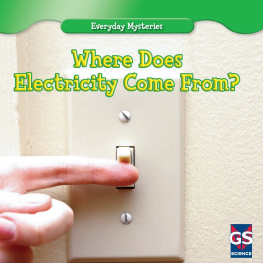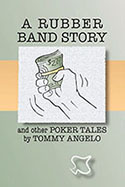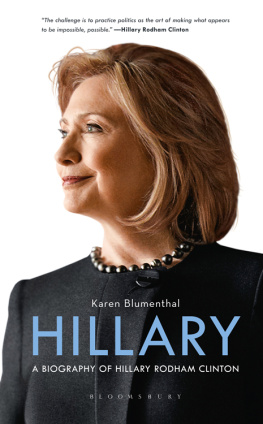Hillary Angelo - How Green Became Good
Here you can read online Hillary Angelo - How Green Became Good full text of the book (entire story) in english for free. Download pdf and epub, get meaning, cover and reviews about this ebook. year: 2021, publisher: University of Chicago Press, genre: Politics. Description of the work, (preface) as well as reviews are available. Best literature library LitArk.com created for fans of good reading and offers a wide selection of genres:
Romance novel
Science fiction
Adventure
Detective
Science
History
Home and family
Prose
Art
Politics
Computer
Non-fiction
Religion
Business
Children
Humor
Choose a favorite category and find really read worthwhile books. Enjoy immersion in the world of imagination, feel the emotions of the characters or learn something new for yourself, make an fascinating discovery.
- Book:How Green Became Good
- Author:
- Publisher:University of Chicago Press
- Genre:
- Year:2021
- Rating:3 / 5
- Favourites:Add to favourites
- Your mark:
- 60
- 1
- 2
- 3
- 4
- 5
How Green Became Good: summary, description and annotation
We offer to read an annotation, description, summary or preface (depends on what the author of the book "How Green Became Good" wrote himself). If you haven't found the necessary information about the book — write in the comments, we will try to find it.
How Green Became Good — read online for free the complete book (whole text) full work
Below is the text of the book, divided by pages. System saving the place of the last page read, allows you to conveniently read the book "How Green Became Good" online for free, without having to search again every time where you left off. Put a bookmark, and you can go to the page where you finished reading at any time.
Font size:
Interval:
Bookmark:
Hillary Angelo
The University of Chicago Press
Chicago & London
The University of Chicago Press, Chicago 60637
The University of Chicago Press, Ltd., London
2021 by The University of Chicago
All rights reserved. No part of this book may be used or reproduced in any manner whatsoever without written permission, except in the case of brief quotations in critical articles and reviews. For more information, contact the University of Chicago Press, 1427 E. 60th St., Chicago, IL 60637.
Published 2021
Printed in the United States of America
30 29 28 27 26 25 24 23 22 21 20 1 2 3 4 5
ISBN-13: 978-0-226-73899-4 (cloth)
ISBN-13: 978-0-226-73904-5 (paper)
ISBN-13: 978-0-226-73918-2 (e-book)
DOI: https://doi.org/10.7208/chicago/9780226739182.001.0001
Library of Congress Cataloging-in-Publication Data
Names: Angelo, Hillary, author.
Title: How green became good : urbanized nature and the making of cities and citizens / Hillary Angelo.
Description: Chicago : University of Chicago Press, 2021. | Includes bibliographical references and index.
Identifiers: LCCN 2020037021 | ISBN 9780226738994 (cloth) | ISBN 9780226739045 (paperback) | ISBN 9780226739182 (ebook)
Subjects: LCSH: Urban parks. | Public spacesEnvironmental aspects. | Nature and civilization.
Classification: LCC SB486.S65 A544 2021 | DDC 333.78/3dc23
LC record available at https://lccn.loc.gov/2020037021
 This paper meets the requirements of ANSI / NISO Z39.481992 (Permanence of Paper).
This paper meets the requirements of ANSI / NISO Z39.481992 (Permanence of Paper).
For my father
Since 1994, New York Citys Brooklyn Botanic Garden has sponsored an annual Greenest Block in Brooklyn contest that promotes streetscape gardening, tree stewardship, and community development by encouraging residential and commercial blocks to plant flowers and add greenery to front gardens, window boxes, and tree pits (Greenest Block in Brooklyn, n.d.). The 2014 winner scored a perfect 100% on participation and turned neighbors into friends (Love 2014). The contest rewards such activity because, as the New York Times recently reported, plant material is an index of civic spirit and community cohesion. It boils down to people more than plants, said the program manager. Its where you get that tangible sense of love. Which block really felt the most unified? Where is that sense of community really most palpable? Thats urban resilience right there (Levine 2017).
At first glance, there is nothing particularly unusual about these sentiments. In an era of climate change and ecological crisis, urban greening is understood to be a worldwide policy trend, and the ideas motivating the Greenest Block contest are a recognizable global phenomenon. City planners, architects, activists, and municipal governments all use green space to make urban environments more hospitable and sustainable. Scholars study its political, social, and economic effects on urban neighborhoods: perceptions of urban gardening as a transformative and counterhegemonic activity (White 2011); how people use nature as a source of moral value (Bell 1995, 120); the fact that greening initiatives richen and whiten, their desirability increasing property values and, thus, contributing to gentrification (Gould and Lewis 2016). Green and sustainable cities have become paragons of ideal urbanism, not only in the West, but also in new smart cities in the Middle East and large megacities in the Global South. In China, urbanism of ambition... has a green face (Sze 2015, 14), while Abu Dhabis Masdar City sees itself as a global prototype of ecocity futurism (Gnel 2019, 204). Urban greeningundertaken in the name of ecological sustainability and resilience as well as quality of lifeis being carried out in a wide range of places with very different histories, local ecologies, and available aesthetic and ecological repertoires for urban life.
But why should plant material be so widely interpreted as a tangible indicator of civic spirit or a sense of love? The addition of green space to cities is not intrinsically meaningful. There is nothing inherent to the activity that should cause greening activities to be interpreted as a sign of community spirit or care for a neighborhood and encouraged by contests like the Greenest Block, even and especially in cases in which such interventions might be at odds with ecological goals. In the absence of these associations, not only would it not necessarily occur to people to improve urban environments with street trees, flowers, or window boxes; these actions would also not be interpreted by audiences as improvements. And though it is not too difficult to think of other things people do to improve urban environmentslike fill them with public art, or optimize their efficiency by rationalizing street plans, or guarantee all their residents access to housingit takes real effort to imagine a counterfactual reality in which greening acts carry no symbolic significance, one in which planting city streets with trees and flowers would be seen as foolish, or decadent, or even a public health risk.
These practices and associations are the object of analysis of this book: a green-as-good logic that is endemic to the planning, design, and study of urban green space; the set of practices celebrated by the Greenest Block contest that are common, not only in large cities in Europe and North America, but in a wide range of environments across the world today. The challenge to imagine green as a neutral value underscores the historicity and contingency of associations of green with good. And, if there is nothing necessary, inevitable, or permanent about this configuration, greenings recurrence as a recognizable, aesthetic and moral practice over time and across place is a thing to be explained. When people want to make urban environments better they often turn to nature. But under what conditions is it possible to use everyday signifiers of nature to improve urban environments? What are the structural, material, and social or cultural conditions for greening to be legible as a form of moral action in the first place? And what are the effects of this recurrent activity on urban politics and urban transformation?
I define urban greening as the normative practice of using everyday signifiers of nature to fix problems with urbanism. In urban practice, the catchall term generally includes superficially green forms of streetscapingurban farms, community gardens, street trees, pocket parksas well as gray high-tech ecological interventions such as green building and coastal adaptation. I use this capacious popular policy term deliberately, to highlight the commonalities across this range of present practices and the continuities with those of prior eras. If, in the form of urban sustainability and climate adaptation, greening appears quintessentially contemporary, in another sense urban sustainability is but the most recent iteration of green urbanism. Raymond Williams (2005, 7175) famously quipped that nature is one of the most complex words in the English language, connoting urban parks and apparent wildernesses, plague and famine, providence and destruction, force and resource. In this sense, as long as there have been cities, there have been efforts to improve them with desirable symbolic forms of nature, such as parks and green space, alongside as many efforts to tame, protect them from, and ameliorate the effects of extreme weather, wild animals, and ecological threats of various kinds. The objects, practices, and associations of interest here are those commonly understood to have originated in nineteenth-century urban-industrial environments: the widespread recognition of plants, trees, small animals, and especially green open space as beneficial investments in the public good, understood to be important ways to show care for a city and its people.
Font size:
Interval:
Bookmark:
Similar books «How Green Became Good»
Look at similar books to How Green Became Good. We have selected literature similar in name and meaning in the hope of providing readers with more options to find new, interesting, not yet read works.
Discussion, reviews of the book How Green Became Good and just readers' own opinions. Leave your comments, write what you think about the work, its meaning or the main characters. Specify what exactly you liked and what you didn't like, and why you think so.













